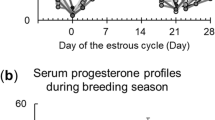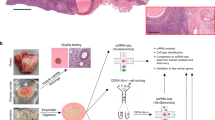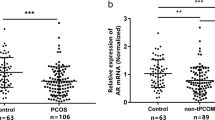Abstract
IN the ovary of Artemia salina, some oocytes undergo a peculiar transformation1. After the primary growth period, numerous granules giving a positive Feulgen reaction appear in the nucleus, fuse into clumps, and finally give rise to a large homogeneous droplet of strongly Feulgen-positive material. This droplet is expelled into the cytoplasm through a hole in the nuclear membrane. The nucleus remains as a clear vesicle containing nucleoli and ribonucleic granules but devoid of deoxyribonucleic acid. Finally, the droplet is expelled from the cell and disappears entirely. This process appears to be very different from common pycnosis and caryorhexis. It is, so far as we know, the only case where deoxyribonucleic acid is expelled as a whole into the cytoplasm, while the other components of the nucleus remain apparently unchanged.
This is a preview of subscription content, access via your institution
Access options
Subscribe to this journal
Receive 51 print issues and online access
$199.00 per year
only $3.90 per issue
Buy this article
- Purchase on Springer Link
- Instant access to full article PDF
Prices may be subject to local taxes which are calculated during checkout
Similar content being viewed by others
References
Fautrez-Firlefyn, N., C.R. Soc. Biol. (in the press).
Lison, L., Acta Anatomica (in the press).
Lison, L., and Pasteels, J., private communication.
Author information
Authors and Affiliations
Rights and permissions
About this article
Cite this article
LISON, L., FAUTREZ-FIRLEFYN, N. Deoxyribonucleic Acid Content of Ovarian Cells in Artemia salina. Nature 166, 610–611 (1950). https://doi.org/10.1038/166610b0
Issue Date:
DOI: https://doi.org/10.1038/166610b0
This article is cited by
-
Chromatin extrusion and DNA transfer during microsporogenesis
Chromosoma (1959)
Comments
By submitting a comment you agree to abide by our Terms and Community Guidelines. If you find something abusive or that does not comply with our terms or guidelines please flag it as inappropriate.



